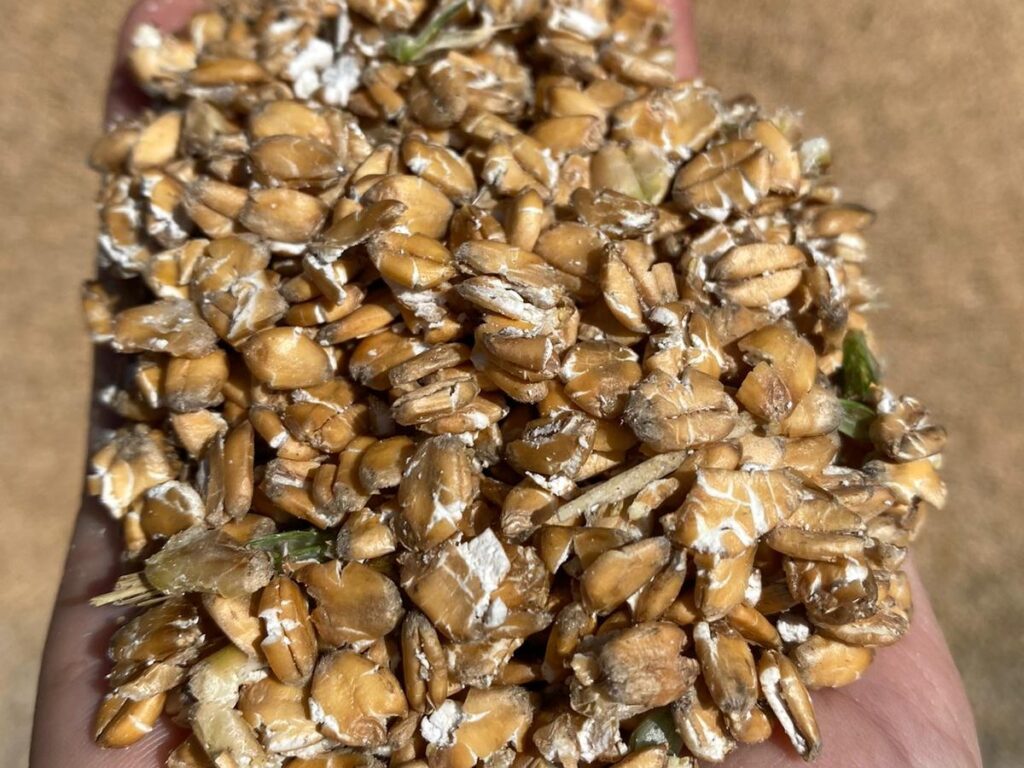Farmers advised to feed crimped grain to balance shortfalls in silage
6th June 2023
Home-grown concentrates such as crimped grain are a cost-effective way of balancing low energy and nutrient levels in first cut silage that was harvested later this season as a result of wet weather, Lientjie Colahan from Lallemand explained.
Mrs Colahan said the timing of the wet weather this year resulted in some farms taking first cut later than originally planned, which could result in a lower energy forage. These farms could benefit from supplementing livestock with crimped feed, which is a good home-grown energy alternative.
“Crimped grain can help balance the energetic value of the ration, without increasing the proportion of purchased feed required,” she said.
“The straw left behind after combining can also be baled and used for feed. Because the crop is harvested earlier than dry grains, the digestibility value of the straw is marginally increased.”
Mrs Colahan said crimped grain is a safe way to lift the energy content of rations as it contains a rumen-friendly source of starch. However, farmers must carefully consider the way they handle and treat crimp, as the way it is ensiled has a considerable impact on its nutrient retention and quality at feed out.
She added many farmers may have made high bulk silage that is low in energy levels, in which case crimped grain is an attractive option for balancing diets.
“If first-cut grass silage analysis is lower in ME than expected, crimped cereals should be considered as a cost-effective way to make up the shortfall in rations.
“Crops that are suitable for crimping include maize, barley, wheat, oats, and triticale. Grains should be harvested at a moisture content of between 25 and 40 percent – typically two to three weeks earlier than conventionally combining,” she adds.
Due to the high moisture, all crimped cereals will need to be treated with an appropriate inoculant to reduce spoilage and nutrient loss.
“Spoilage microorganisms such as yeasts and moulds must be controlled when the crimped grain is fermenting, as well as when it is being fed out, to inhibit them from consuming the valuable nutrients preserved within the clamp,” Mrs Colahan explained.
Magniva Platinum Crimp preserve moist grains and offers a cost-effective alternative to conventional acid treatments.
“Magniva Platinum Crimp is a biological option containing antifungal bacteria which produce powerful compounds that inhibit spoilage microorganisms. Designed specifically for crimp, it contains a high dose of beneficial heterofermentative bacteria to make sure they dominate the wild bacteria which would otherwise create an uncontrolled fermentation and do not necessarily inhibit the growth of spoilage organisms.
“This ensures faster preservation, while helping to avoid heating and spoilage at feed out, and when used with the correct storage conditions it can reduce wastage to almost zero,” explains Mrs Colahan.
She also emphasised the importance of good clamp management. “Prepare the clamp properly with a ground sheet, side sheets and a top sheet that’s properly weighed down after the clamp has been sheeted. Also pay attention to vermin control throughout the season as rats are particularly drawn to this feed.”

